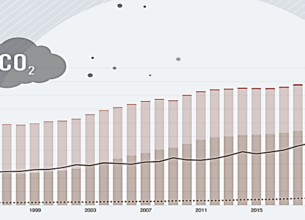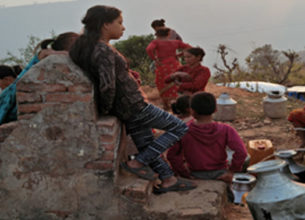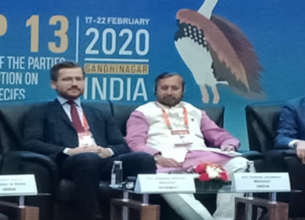Climate Change and the role of Panchayat Raj Institutes (PRI’s)
25, Nov 2022

Prelims level : Environment
Mains level : GS-III Environment & Biodiversity | Conservation, Environmental Pollution & Degradation, Eia
Why in News?
- If India has to achieve the set of goals enunciated in the ‘Panchamrit’ resolution of the COP26 climate summit in Glasgow 2021, it is necessary that Panchayati raj institutions, the third tier of government which are closest to the people are involved.
Climate change and rural area
- Major impact on rural areas: The greater variability in rainfall and temperatures, etc. experienced of late has directly affected the livelihood and well-being of millions of rural households.
- PRI excluded from National action plan: India’s National Action Plan on Climate Change 2008 identifies a range of priority areas for coordinated intervention at the national and State levels. However, there would have been better results had Panchayati raj institutions been given a greater role.
- Decentralization of climate efforts are necessary: Through the ongoing decentralization process which ensures people’s participation, panchayats can play a crucial and frontline role in coordinating effective responses to climate risks, enabling adaptation and building climate-change resilient communities.
What is carbon neutrality?
- The climate change discussion also focuses on the emerging and widely accepted concept of ‘carbon neutrality’ which puts forth the notion of zero carbon developments, nature conservation, food, energy and seeds sufficiency, and economic development.
- As human activities are the cause of the current climate crisis, mitigating greenhouse gas emissions and adapting to growing and extreme weather events are critical.
- Zero carbon development which promotes sustainable living is the effective solution to reducing anthropogenic emissions and improving climate resilience.
Efforts of Panchayat raj institutes to fight climate change: Case study of Meenangadi:
- Carbon neutral Meenangadi: In 2016, the panchayat envisaged a project called ‘Carbon neutral Meenangadi’, the aim being to transform Meenangadi into a state of carbon neutrality. There were campaigns, classes and studies to begin with. An awareness programme was conducted initially. A greenhouse gases emission inventory was also prepared. The panchayat was found to be carbon positive.
- Implementation of Multi-sectoral schemes: An action plan was prepared by organising gram Sabha meetings. Socio-economic surveys and energy-use mapping were also carried out. Several multi sector schemes were implemented to reduce emissions, increase carbon sequestration, and preserve the ecology and bio-diversity.
- Tree plantation Initiative: ‘Tree banking’ was one of landmark schemes introduced to aid carbon neutral activities which encouraged the planting of more trees by extending interest-free loans. Interestingly 1,58,816 trees were planted which have also been geo-tagged to monitor their growth.
- People’s participation: The entire community was involved in the process, with school students, youth, and technical and academic institutions given different assignments. Five years have passed and the changes are visible. Local economic development was another thrust area where LED bulb manufacturing and related micro-enterprises were initiated.
Government of India’s effort to support climate change: ‘Clean and Green Village’
- SDG theme: The Ministry of Panchayati Raj has focused its attention on localising the Sustainable Development Goals (SDGs) on a thematic basis.
- Various activities delegated to PRI: ‘Clean and Green Village’ has been identified as the fifth theme where panchayats can take up activities on natural resource management, biodiversity protection, waste management and afforestation activities.
- Documentation of best practices: According to the latest data, 1,09,135-gram panchayats have prioritised ‘Clean & Green Village’ as one of their focus areas for 2022-23. The Ministry has highlighted the need for the documentation of best practices and for wider dissemination.
- Integrated panchayat development plan: The net result is that many panchayats are coming forward with their eco plans. The integrated Panchayat Development Plan prepared by all panchayats is a stepping stone towards addressing many of the environmental concerns of villages.
Conclusion:
- In today’s age of rapid technological advancements and digital transformation, India’s rural local bodies are silently contributing their strength to ensuring the global target of carbon neutrality, as envisaged in the UN conference on climate change.














